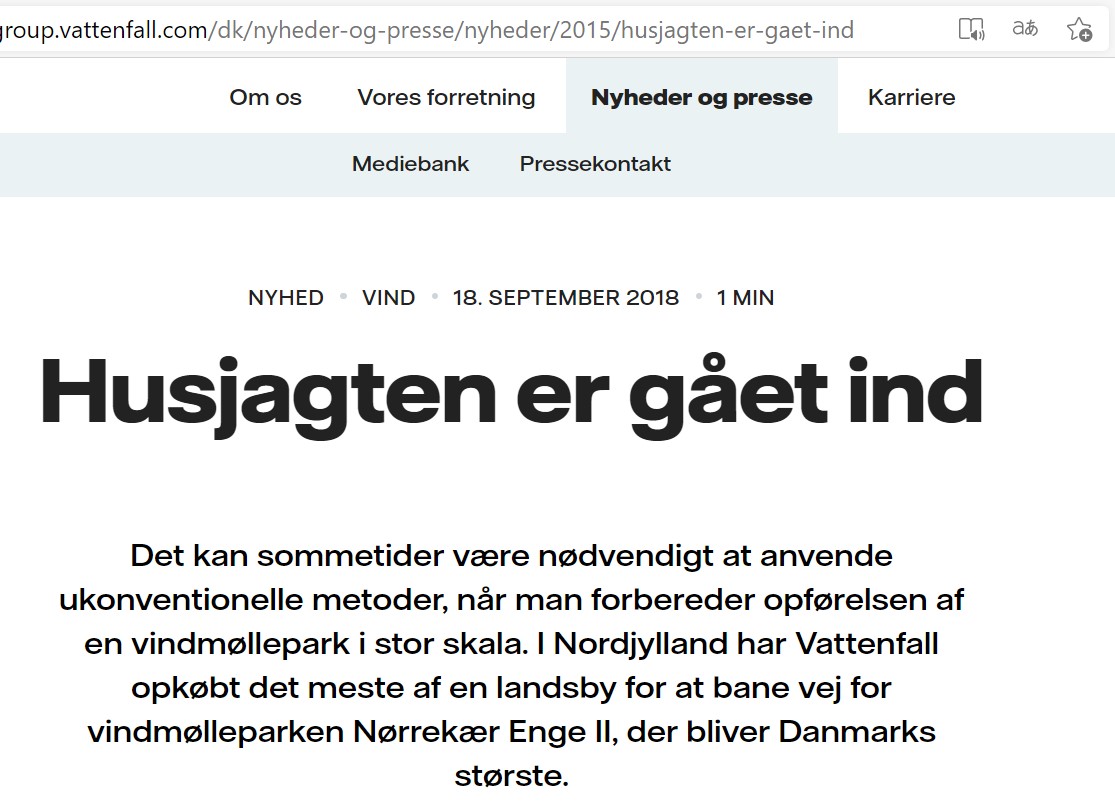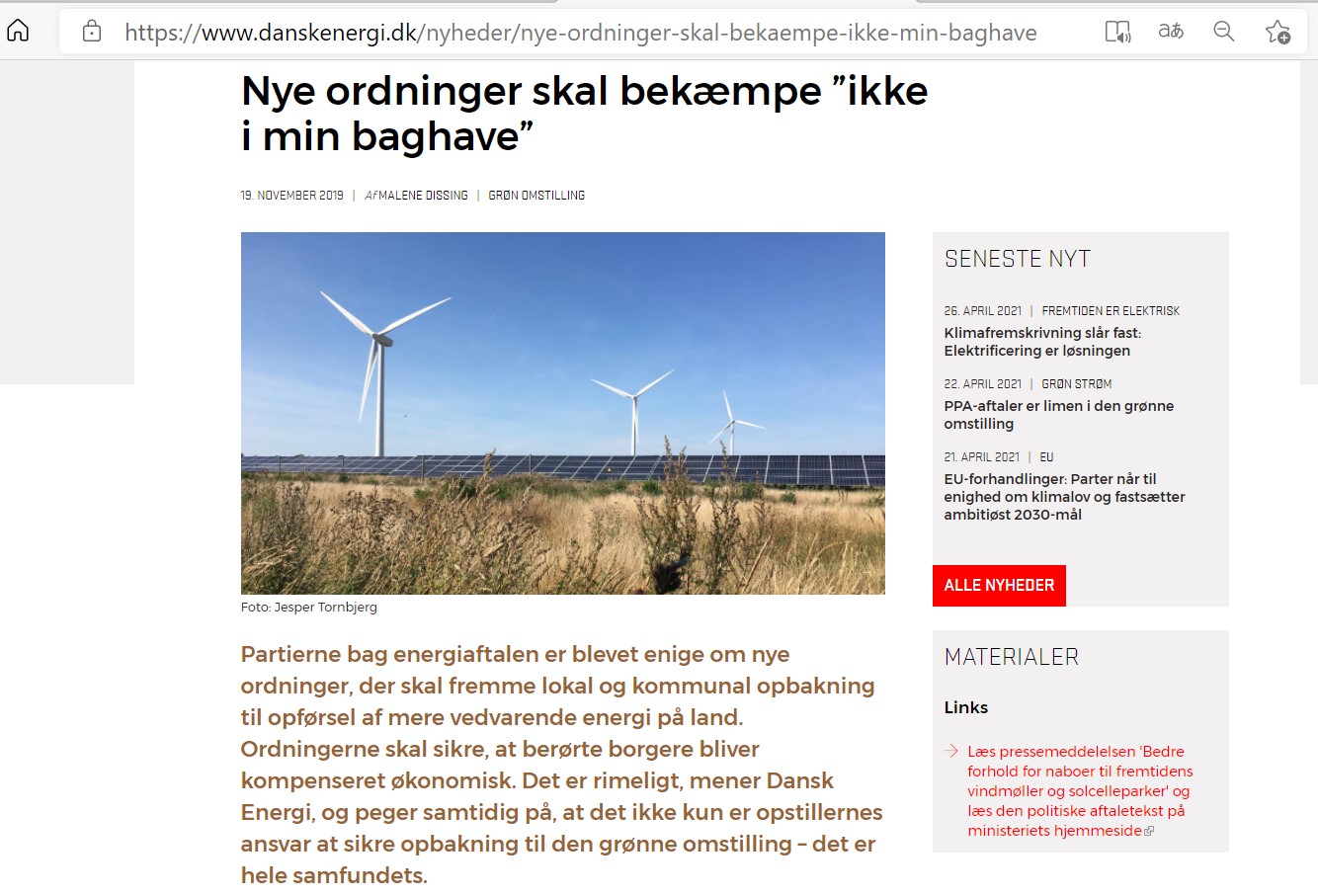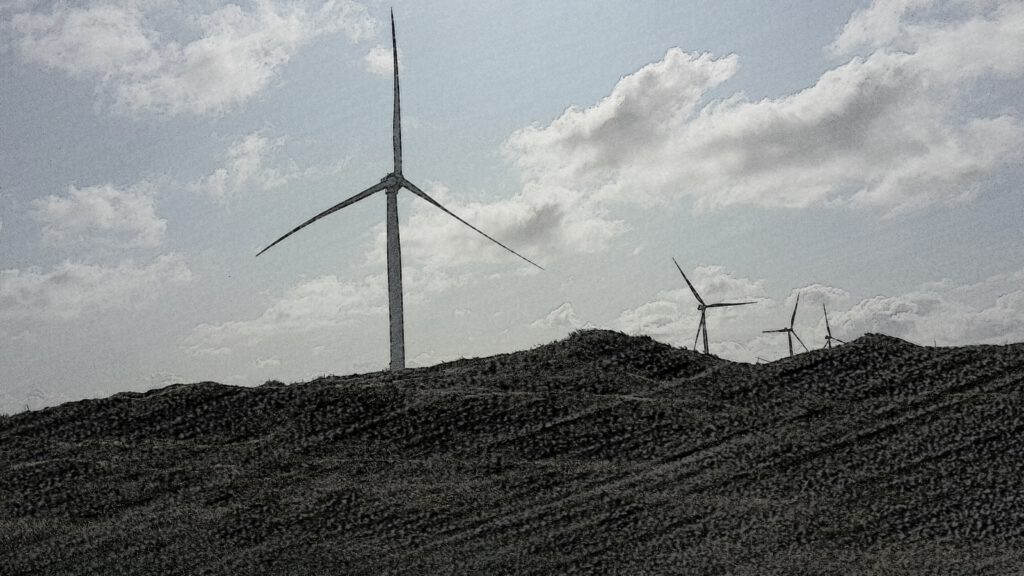David Rudolph, Technical University of Denmark.
In February 2019, Dansk Energi, a business and lobby organisation for energy companies in Denmark, launched their latest Renewable Energy Outlook Report and invited for a debate among representatives from public authorities and the wind industry to discuss ‘Not-in-my-backyard’ obstacles to wind farms developments.
This was deemed necessary, because Denmark – a global frontrunner in the large-scale utilisation of wind resources and in the export of technological expertise and innovation – has increasingly met challenges to expand wind energy capacities on land. There are multiple and entangled reasons as to why the installation of new wind turbines has slackened recently. Two key challenges hampering the pace of further expansions can be mainly found in the depletion of suitable land resources and in the growing local opposition to new wind farm proposals. Both issues have to be viewed in light of a shift from wind energy being driven by local entrepreneurs, grassroot movements and wind turbine cooperatives towards corporate driving forces of large-scale wind farm deployment. This process has been termed as a paradigm shift in Danish wind power (Kirkegaard et al., 2021), prompted by liberalisation of the energy market, an overarching climate change urgency and the advanced specialisation of wind turbine technology and industry.
Access to land and place-based resistance to wind farms
Regarding the first challenge, a study by the Danish Board of Technology revealed that the land area of Denmark has become too small for its various land use plans for food production, transport, forestry, housing and renewable energy production. The study from 2017 concluded that Denmark would require 140% of its land mass if all plans in the pipeline are to be realised. It is therefore less surprising that wind farm developers also face stiff competition for getting access to lucrative and viable sites to build new and larger wind turbines on land. In turn, this situation puts landowners in a more powerful position that provides the possibility to benefit through selling or leasing land resources to developers, while thwarting the engagement of the wider public in early planning stages.
Regarding the second challenge, social contestations over wind farm proposals have already spurred a wealth of research in Denmark and internationally, exploring underlying motivations, issues and socio-political conditions contributing to new or exacerbated conflicts over wind turbine deployment. In this process, research has not got tired of persistently dismissing the popular NIMBY (not-in-my-backyard) phrase as a fallacy that hastily and wrongfully points the finger at allegedly selfish and parochial residents as the core of the problem. The popularity and simplicity of this allegation seems to resonate with Dansk Energi, too. Instead, we are starting to understand that place-based opposition to wind energy is part and parcel of social and environmental justice. A simple yet far-reaching observation has been that contestations over wind energy are complex matters. This is because they do not denote a clear-cut clash of conflicting interests. Contestations rather arise from entangled issues of procedural, distributional and recognition (in)justices in relation to the implementation of wind farm projects, the winners and losers they create and the area in which they are proposed. In other words, local residents tend to be more concerned about both the process and its outcomes, rather than the wind turbines per se.
Denmark is no exception here, where both aspects have become intriguingly obvious in the following case. During fieldwork focusing on the practices and approaches of wind farm developers and their handling of challenges and opposition, the scarcity of land for building new wind farms has reached a peculiar scale.
The activation of territorial stigma
Similar to other countries, rural and peripheral areas in Denmark have also suffered from economic decline, deprivation and structural change. Tangible manifestations of outmigration, agricultural disinvestment, closures and the centralisations of public services and infrastructural decay do not only imperil the livelihood in peripheral areas, but also found a stigmatising expression of ‘Outskirts-Denmark’ (Udkantsdanmark) in the public discourse. Given the increased competition for land, some wind farm developers strategically target these marginalised areas for building wind farms, as these provide certain advantages on top of wind resources, such as cheaper land and less resistance. While this tactic does not seem very surprising, it unveils an astonishing facet. The rhetoric of some developers contains an (purposeful or unwitting) activation of the territorial stigma of ‘Outskirts-Denmark’ to help mobilise land for wind farm developments.
The concept of territorial stigma originates from urban studies, describing the phenomenon of tainted and disreputable neighbourhoods and explaining the processes by which disrepute of place is produced as well as the symbolic power emanating from these blemished places (Wacquant et al. 2014). Territorial stigma of supposedly dysfunctional places is often activated to justify and induce intervention from outside. In our case, the stigma of marginalised ‘Outskirts-Denmark’ has led to the provocative and bewildering headline of ‘village today, wind farms tomorrow’, which was employed by one developer to promote the approach of clearing more space for the enlargement of a wind farm project. This attention-grabbing headline has later been replaced with the ‘house hunting has begun’ to hint at the necessity of unconventional methods when constructing a large wind farm. In this case, the unconventional method involved the buyout of large parts of a small village to literally pave the way for the wind farm. Over and above, proponents explicitly utilised the territorial stigma in order to legitimise the approach by spotlighting the faulty building stock, decay, lack of investments, continuous outmigration and people’s willingness to leave the area, while portraying wind energy as a way of averting decline and revalorising the area. More detail about the mobilisation of stigma has been described elsewhere (Rudolph & Kirkegaard, 2019).

Needless to say, wind turbines cannot be compared with hazardous infrastructures that create toxic environments and spill stigma over to their locales and inhabitants. In contrast, the existing stigma of places has here been used to justify interventional activities, whereas wind turbines are assigned the role of heralding and initiating a productive trajectory against further deprivation. Despite the asserted benevolent intentions, it remains to be asked where all this may leave members of the community who are not fortunate enough to sell land or those who are not willing to give up their properties? It is not difficult to imagine that this approach did not encounter an undivided response among the local population. Local resistance has emerged, challenging the processes through which the project has been pursued, whilst arguing for greater participation in the wind farm project that would allow rural communities to benefit instead of displacing them by enforcing rural marginalisation.
Social justice and low-carbon energy landscapes
In other words, the example illustrates that territorial struggles, place-based opposition or place-protective action (Devine-Wright, 2009) call attention to what wind farms may mean for different places and what wind energy can or should accomplish beyond the utilisation of local resources to meet climate targets. This is ultimately a question of social justice. New and advanced energy landscapes are not just locales accommodating technological artefacts of energy transition, but also an expression of social and environmental (in)justices and (in)equalities. Thus, the formation and acceptance of wind energy landscapes cannot be primarily reduced to technological characteristics either, but are embedded in local discourses, socio-political contexts and power relations (Bosch & Schmidt 2020).
However, in light of an insurgent countryside jeopardising national climate goals, Danish authorities have recently introduced financial incentives for municipalities, mandatory compensations for neighbours and a requirement for reducing the number of turbines through repowering (i.e. replacing smaller turbines with fewer larger ones). Moreover, they also established the possibility for developers to purchase properties from neighbours who are willing to sell. These measures raise the question whether Danish authorities may have drawn wrong conclusions for making the development of wind farms fairer and more equitable. Drawing on financial compensations for neighbours and the removal of wind turbines (or neighbours) as a remedy awakens the suspicion of Danish authorities either inferring some sort of short-sighted NIMBY-like incompatibility between people and wind turbines or struggling to find new ways of (re-)connecting the affected public to wind farm developments. Either way, both seem to be a lamentable conclusion from a country that takes pride in its wind energy history.

While the activation of territorial stigma is just one example, even if an exceptional and drastic example, of territorial struggles over the deployment of wind turbines, there are some lessons to be drawn for just transitions:
1) Stigmatising host communities neither takes account of underlying processes of marginalisation nor the self-determination of affected communities. There is a need for dialogue about a sustainable future vision for rural areas involving renewables and greater responsibility of inhabitants in shaping this vision.
2) Just wind farm projects cannot simply be achieved through an inquiry into what is deemed acceptable or the dispersion of compensations and ‘benefits’, but by thoroughly engaging with social contexts, pre-existing inequalities and local needs.
3) Despite the indisputable potential of wind farms for emancipating marginalised areas, the inherent sustainability of wind energy landscapes cannot be taken for granted. There is a need to venture beyond collective modes of energy production and establish collective and confrontational ways for steering the process towards just energy landscapes.
References & further readings:
Bosch, S.; Schmidt, M., Wonderland of technology? How energy landscapes reveal inequalities and injustices of the German Energiewende. Energy Research & Social Science, 2020, 20, 101733.
Cowell R.; Bristow, G.; Munday, M., Wind Power and Justice for Disadvantaged Communities. Joseph Roundtree Foundation Viewpoint, 2012, May. https://www.jrf.org.uk/report/wind-energy-and-justice-disadvantaged-communities
Devine-Wright, P., Rethinking NIMBYism: The role of place attachment and place identity in explaining place-protective action. Journal of Community & Applied Social Psychology 2009, 19 (6), 426-441.
Kirkegaard J.K.; Cronin, T.; Nyborg, S.; Karnøe, P., Paradigm shift in Danish Wind Power: the (un)sustainable transformation of a sector. Journal of Environmental Policy & Planning, 2021, 23 (1), 97-113.
Rudolph, D.; Kirkegaard, J.K., Making Space for Wind Farms: Practices of Territorial Stigmatisation in Rural Denmark. Antipode, 2019, 51 (2), 642-663.
Wacquant, L.; Slater, T.; Borger Pereira, V., Territorial stigmatisation in action. Environment and Planning A 2014, 46(6), 1270–1280.
